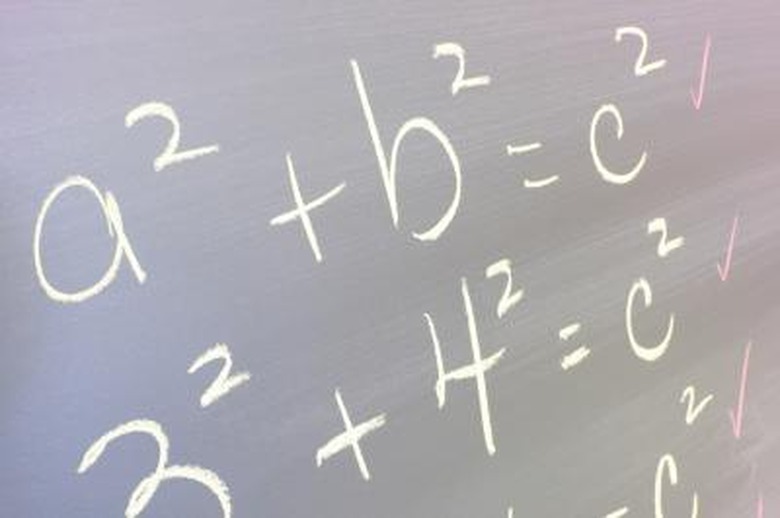How To Convert Exponents To Logs
Since exponents and logarithms are two versions of the same mathematical concept, exponents can be converted to logarithms, or logs. An exponent is a superscript number attached to a value, indicating how many times the value is multiplied by itself. The log is based on exponential powers, and is just a rearrangement of terms. Conversion between the two can aid you in exponent comprehension through viewing it from another angle.
Step 1
Declare an expression containing an exponent. For this example, the expression is 9^3, or nine times nine times nine.
Step 2
Solve the exponent, then write the exponent and its solution as an equation. For this example, 9^3 results in 729. The equation should read 9^3 = 729, with 9 being the initial number, 3 being the exponent and 729 being the answer.
Step 3
Rewrite the initial number as the base of the logarithm, the answer as the number that follows the logarithm base and the exponent as the new answer. For this example, the exponential equation 9^3 = 729 becomes the logarithmic equation log9 729 = 3.
Cite This Article
MLA
Gartneer, Chance E.. "How To Convert Exponents To Logs" sciencing.com, https://www.sciencing.com/convert-exponents-logs-8072894/. 24 April 2017.
APA
Gartneer, Chance E.. (2017, April 24). How To Convert Exponents To Logs. sciencing.com. Retrieved from https://www.sciencing.com/convert-exponents-logs-8072894/
Chicago
Gartneer, Chance E.. How To Convert Exponents To Logs last modified August 30, 2022. https://www.sciencing.com/convert-exponents-logs-8072894/
